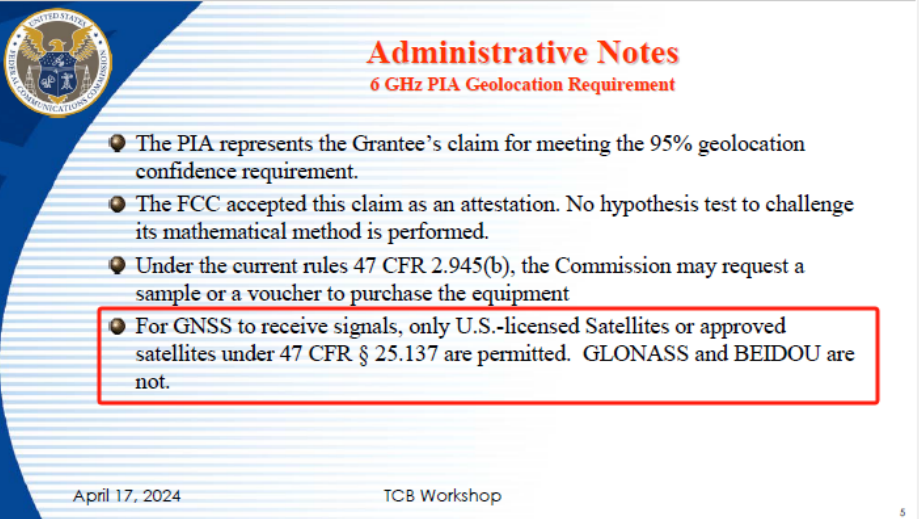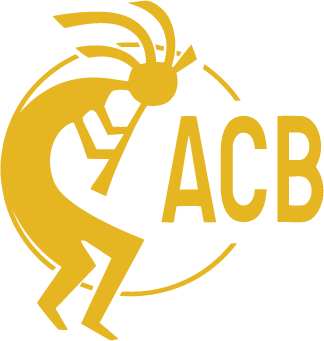FCC KDB 987594 Drafts:
Certification for U-NII 6 GHz Devices
The FCC published new additional VLP rules for the UNII 6 GHz band on January 8, 2024, with an effective date of March 8, 2024. They FCC is working to modify the UNII 6 GHz series of documents for KDB 987594. The following information relates to the proposed draft:
Guides for obtaining a Certification for 6 GHz U-NII devices operating in the 5.925-7.125 GHz band under Part 15, Subpart E:
- 987594 D01 U-NII 6GHz General Requirements v03
- 987594 D02 U-NII 6 GHz EMC Measurement v03
- 987594 D03 U-NII 6 GHz QA v03
- 987594 D04 UN6GHZ Pre-Approval Guidance Checklist v03
- 987594 D05 AFC DUT Test Harness Testing v01r01 (not under draft review)
KDB 987594 U-NII 6 GHz devices D01 D01-D04 推出Draft 版本
ISED Radio Standard Specification:
Wireless Microphones and Wireless Multichannel Audio Systems
RSS-123, issue 5
The Department of Innovation, Science and Economic Development Canada is seeking comments on the consultation of RSS-123, issue 5, “Wireless Microphones and Wireless Multichannel Audio Systems”. This Radio Standards Specification (RSS) sets out the requirements for the certification of licensed wireless microphones and Wireless Multichannel Audio Systems (WMAS).
Comments are due no later than June 20, 2024.
RSS-123, issue 5, Wireless Microphones and Wireless Multichannel Audio Systems
ISED 正在征求对RSSRSS-123, issue 5, Wireless Microphones and Wireless
Multichannel Audio Systems 的技术意见,截止日期为2024 年6 月20 日
ISED Radio Standard Specification:
Wireless Power Transfer Devices
RSS-216, issue 3 (April 2024 draft)
The Department of Innovation, Science and Economic Development Canada is seeking comments on the following consultation: RSS-216, issue 3, “Wireless power transfer devices”.
Comments are due no later than July 2, 2024.
RSS-216, issue 3 – Wireless Power Transfer Devices
ISED 正在征求对RSSRSS-216, issue 3 – Wireless power transfer devices 的技术意见,截止日期为2024 年7 月2 日
FCC Update:
Requests for Waiver of 5.9 GHz Band Rules to Permit Initial Deployment of Cellular Vehicle-to-Everything Technology
ET Docket No. 19-138
The Bureaus have granted each of the Applicants’ waiver requests to deploy Cellular Vehicle-to-Everything (C-V2X) technology within the 5.895–5.925 GHz
band.
View PDF: DA-2424-363A1.pdf
5.895–5.925 GHz 频带内部署移动通信车载设备(C-V2X)技术的豁免要求
MIC Update:
MIC Japan Guideline for Utilization of the US and European Standards Test Data for 2.4GHz band
MIC针对美国和欧洲2.4 GHz 标准测试数据的使用指南
FCC TCBC Update:
Requirements for GNSS when Meeting FCC Geolocation Requirements
April 2024 FCC TCB Workshop:
For GNSS to receive signals, only U.S.-licensed Satellites or approved satellites under 47 CFR § 25.137 are permitted. GLONASS and BEIDOU are not.

2024年4月份FCC TCBC workshop关于GNSS的要求
FCC KDB Updates:
Questions and Answers
近期 FCC KDB更新
Question: What is the FCC guidance for equipment authorization of transmitter module devices, and equipment that incorporates transmitter modules?
Question: What Guidance is provided for certifying radar devices under the provisions of §15.255 of the FCC rules?
Question: What are the SAR test procedures for 3G/4G devices?
Question: What is the FCC?s policy permitting the referencing of test data from another equipment authorization application?
A Rule by the FCC
Supplemental Coverage from Space Networks
The FCC is advancing the first of its kind in the world connectivity via satellite networks—to enable collaborations between satellite operators and surface (terrestrial) service providers to offer connectivity directly to consumer handsets using spectrum previously allocated only to terrestrial service.
What this means is that the satellite networks will offer emergency service connections between mobile handsets and the ROW (Rest of World). The intent is to cover the Earth with on-demand communications for emergency, 911 and related services. This is critically important in remote, under-served areas: back-country hikers, skiers, explorers and recreational people that need to have access to services for extraction, help and critical medical support. As is now available, most emergency support is via direct satellite connection from handsets to LEO satellite constellations. These may not be always available or available and can be very expensive.
Thus, the Commission is advancing more global solutions by providing this spectrum access for improved mobility and emergency coverage.
View PDF: https://acbcert.com/wp-content/uploads/2024-May-American-Certification-Body-newsletter-1.pdf


